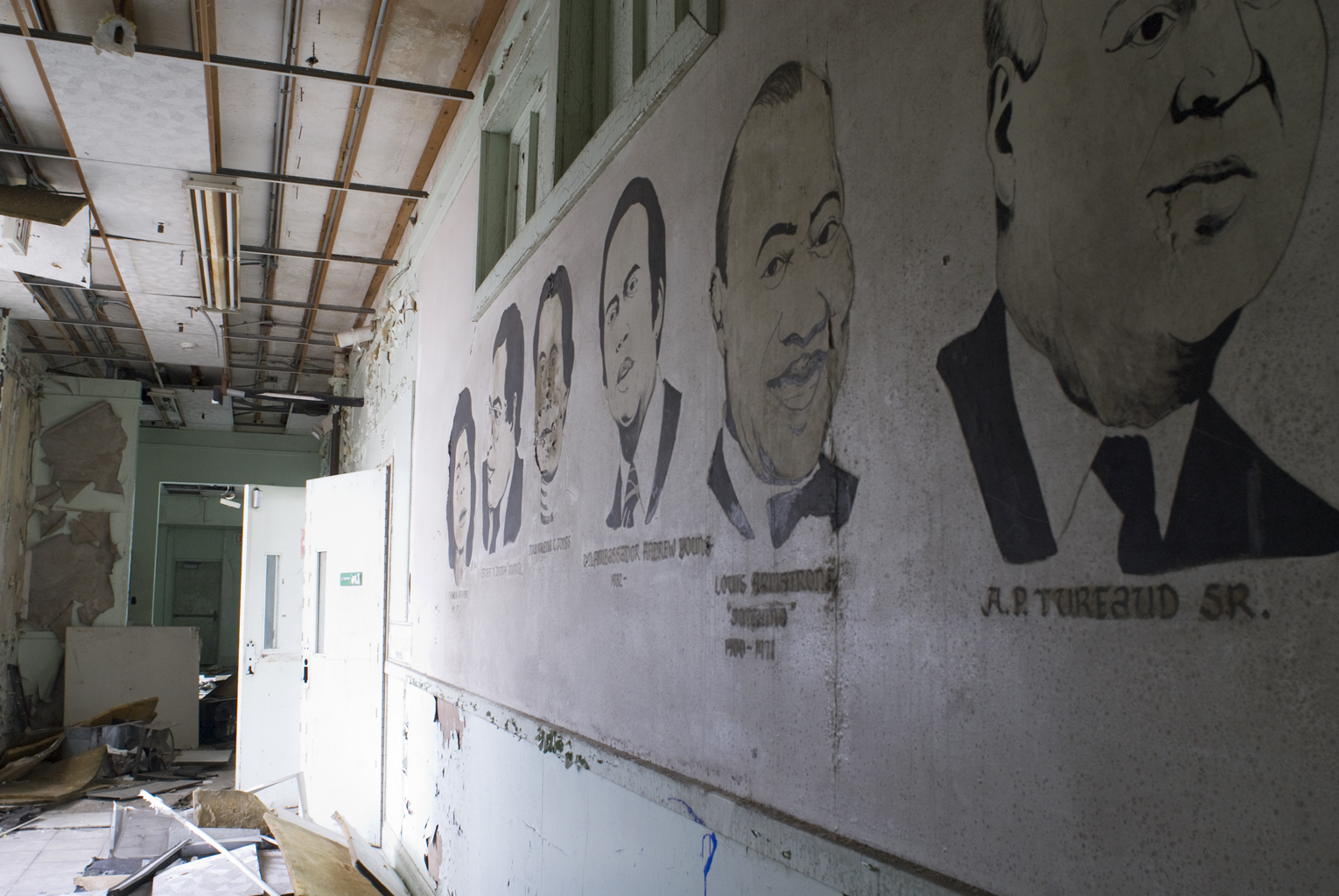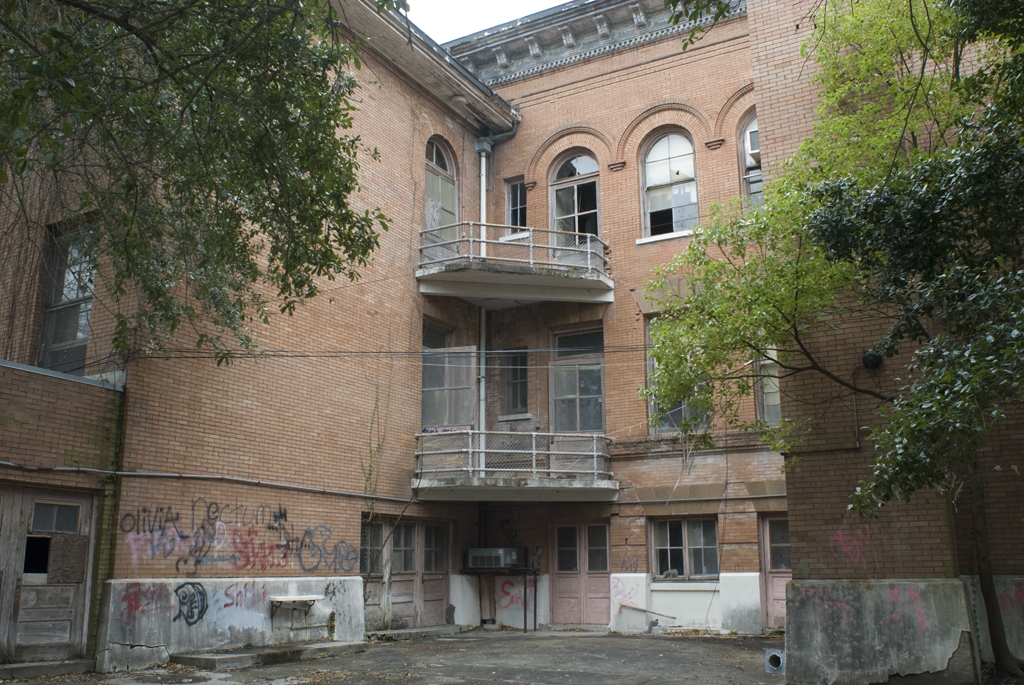The Lens, a photo essay |
Five years after the Orleans Parish School Board shut down dozens of hurricane-damaged public schools, New Orleans residents continue to live alongside the wreckage, with no certainty when the blight will be eradicated. Before Katrina, the school board had 125 campuses with a total capacity of 110,000 students. By the time the storm hit, the number of students attending public school in the city had dwindled to 63,000. Now, the count is 40,000 with another 1,000 students projected to enter the system every year for the next decade, according to a demographic survey completed for the school board last month by GCR and Associates.
The diminished student body means that scattered across the city are more than 52 campuses that won’t be restored as schools, according to the state’s latest School Facility Master Plan. Photographer Andy Cook recently visited some of the mothballed schools.
Photos by Andy Cook. Text by Ariella Cohen, The Lens staff writer
Valena C. Jones Elementary School, 1901 N. Galvez St.
The school’s interior recalls a war zone with shattered glass carpeting long, rubble-filled hallways. Smashed fluorescent light tubes and spent fire hoses snake across a pile of laminated posters. “Watch your habits, they become character,” one poster warns.
Five and half years after teachers drilled Jones students for a last time, leaving sentence-completion exercises dated Aug. 25, 2005, on dusty chalkboards, the Orleans Parish School Board, which owns the 7th Ward building, and the Recovery School District, which controls it, have determined that Jones will be mothballed for the foreseeable future.

Recently, the RSD hired a team of architects to develop a plan to seal the building against moisture and secure it from vandals and squatters. In early January, the RSD released a purchase order for the installation of an alarm-monitoring system and for on-site testing for hazardous materials. No alarm system was in place as of Jan. 29, but RSD Deputy Superintendant for Operations Ramsey Green said in an interview Tuesday that an alarm would be installed within the next 30 to 45 days. Already, the RSD has boarded the school eight times since Katrina, he said.
Under the latest facilities master plan, Jones is slated for restoration during the third phase of school construction, but there is no start date for that phase. Green said the soon-to-be-adopted final master plan could change the phasing sequence of school construction in stride with the GCR demographic study. “Which schools are being built will change,” Green said. “We have to put the schools where the kids are.” The comment does not bode well for Jones, which was built when the 7th Ward boasted a significantly larger population and stands within a mile of three other shuttered campuses. The demographic study projects anywhere from 10 percent to 20 percent student population growth for the 7th Ward, putting the neighborhood in the same slow-recovery category as Broadmoor, St. Roch and parts of eastern New Orleans. Neighborhoods where population growth has been steadier since Katrina or public housing redevelopments have been torn down to make way for mixed-income redevelopments could see student population grow by up to 30 percent, the GCR study said.
Booker T. Washington High School, 1201 S. Roman St.
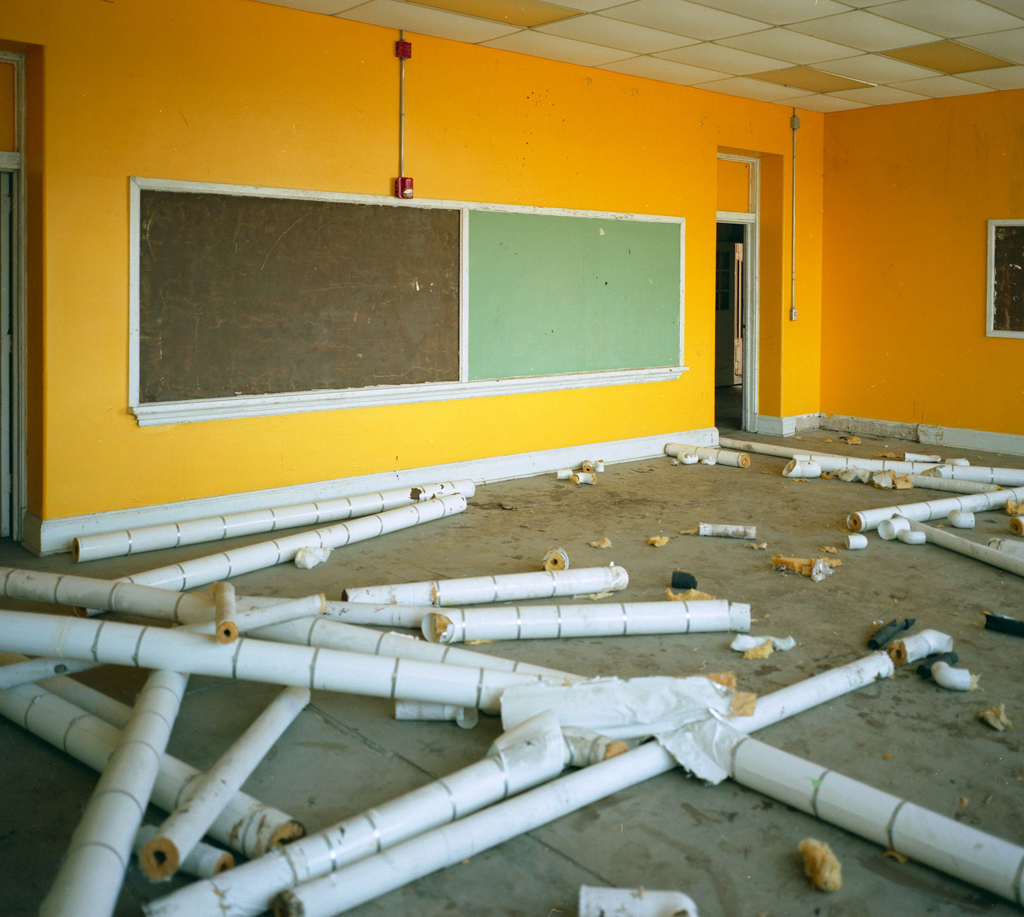
Like Valena C. Jones, Booker T. Washington has become a popular spot for vandals, thieves and squatters. Dating to the 1940s, the Art Deco school was the first new high school in New Orleans built specifically for African-American students. That history has been slowly stripped in the five years since Katrina, thieves having removed architectural detailing and tens of thousands of dollars worth of copper. With better maintenance and security from looters, preservationists contend that the historic school could have been restored for less than it would cost to replace it. “It is a concrete-framed building with a brick exterior, and I think everyone involved agrees that it’s feasible to bring it back online,” National Trust for Historic Preservation fellow Brad Vogel said. “But now it is a matter of cost. It will cost more to save it.” The current plan calls for all but the school’s auditorium to be torn down this year. The old auditorium will be incorporated into the new building.
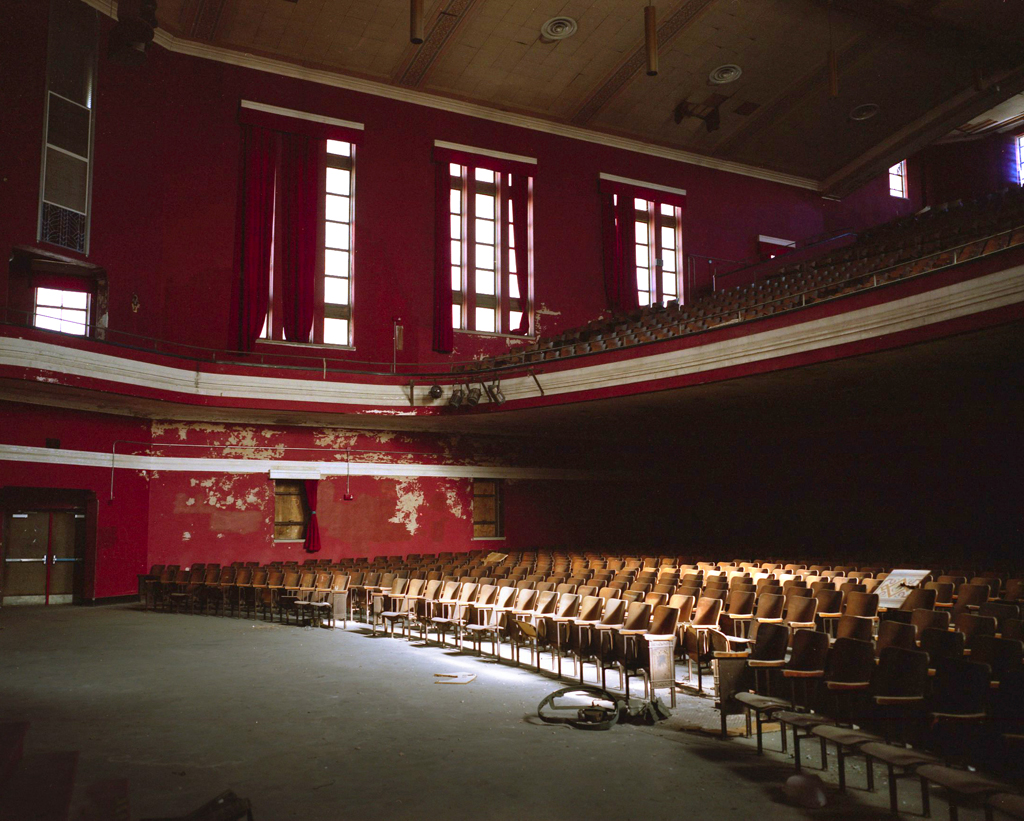
The RSD’s draft plan recommends that New Orleans College Prep, currently using the nearby Sylvanie Williams Elementary School building in the 3100 block of Martin Luther King Jr. Blvd., take over the rebuilt Booker T. campus.
Morris FX Jeff School, 800 N. Rendon St.
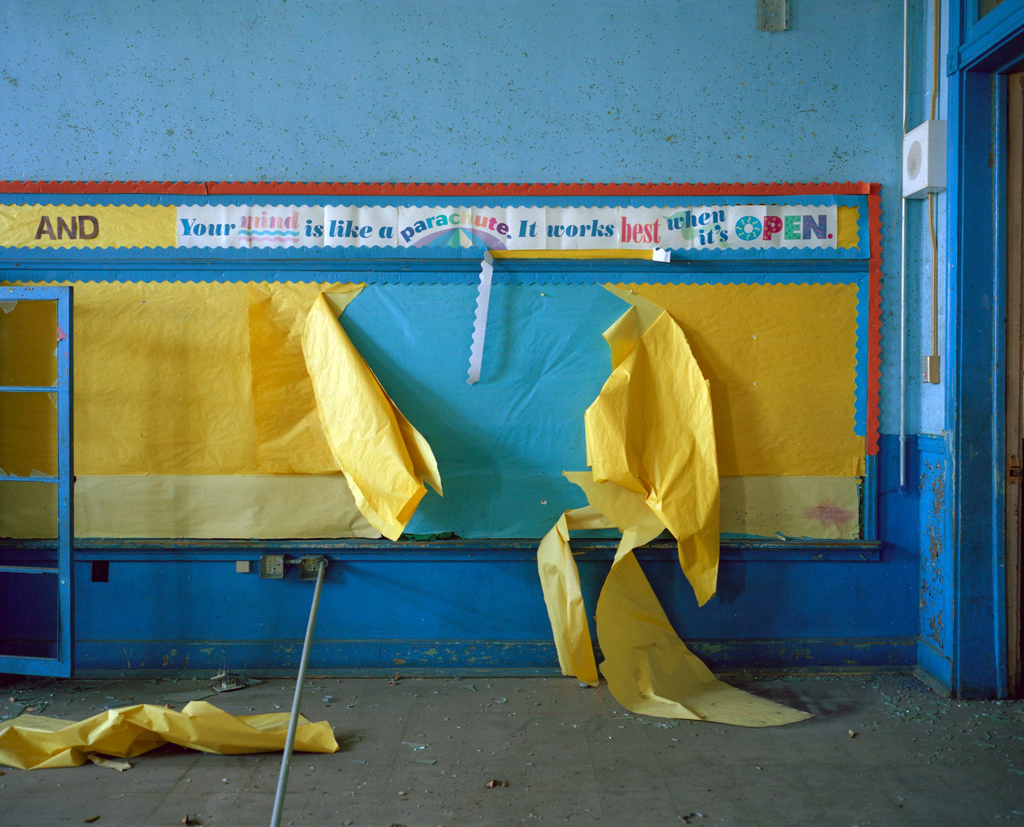
This vacant school is also in line for security improvements, including a new alarm system, but there are no plans beyond that for the building’s future. It is one of 16 vacant campuses that the RSD, which is not legally able to sell property, has offered to OPSB so that the school board can sell them. “They are the only agency that can do something about them so they are going to have to do that,” Green said.
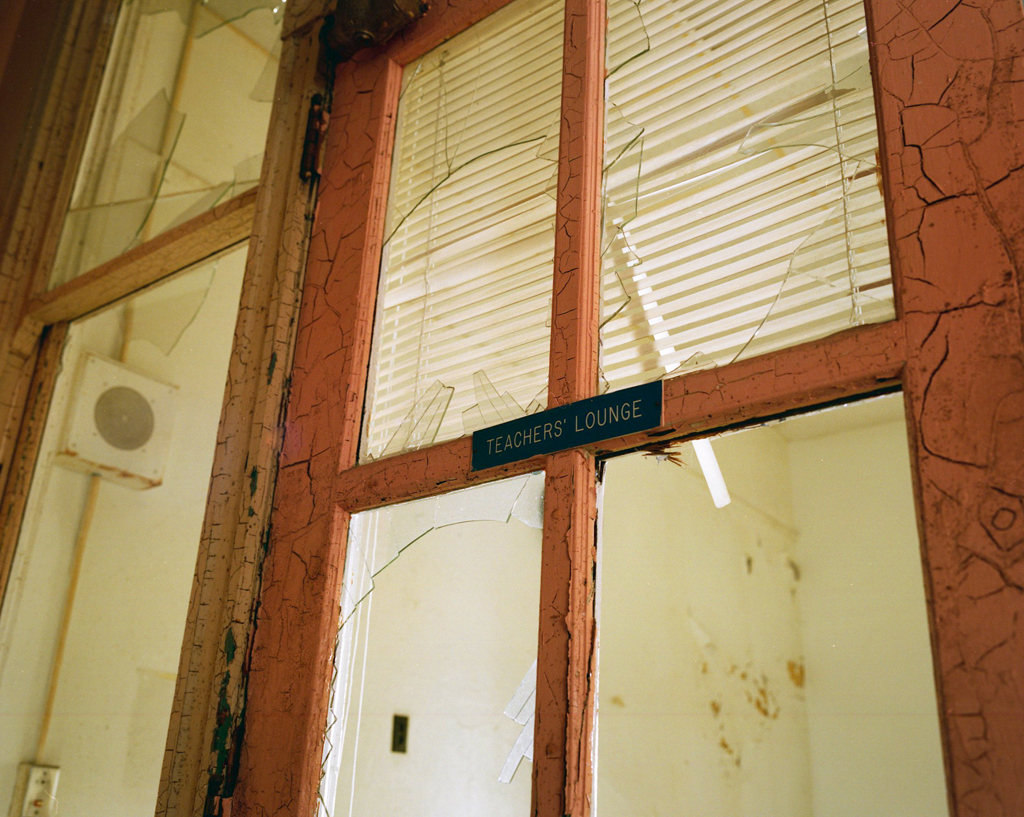
The Recovery School District has asked the Orleans Parish School Board to sell Morris FX Jeff Elementary School.
While eager to see the building auctioned for redevelopment, neighbors say that years of neglect by school officials could make it a tough sell.
“It’s a beautiful historic building, but every month that passes, it deteriorates and loses value,”said neighbor Brod Bagert Jr., a member of the board of Morris Jeff Community School, a charter school that is located at the old Welcome School at 2239 Poydras St., but initially formed with the intention of taking over the Morris FX Jeff site and would still happily claim the site if the RSD would agree to keep it in its school portfolio.
LaSalle Elementary School, 6048 Perrier St.
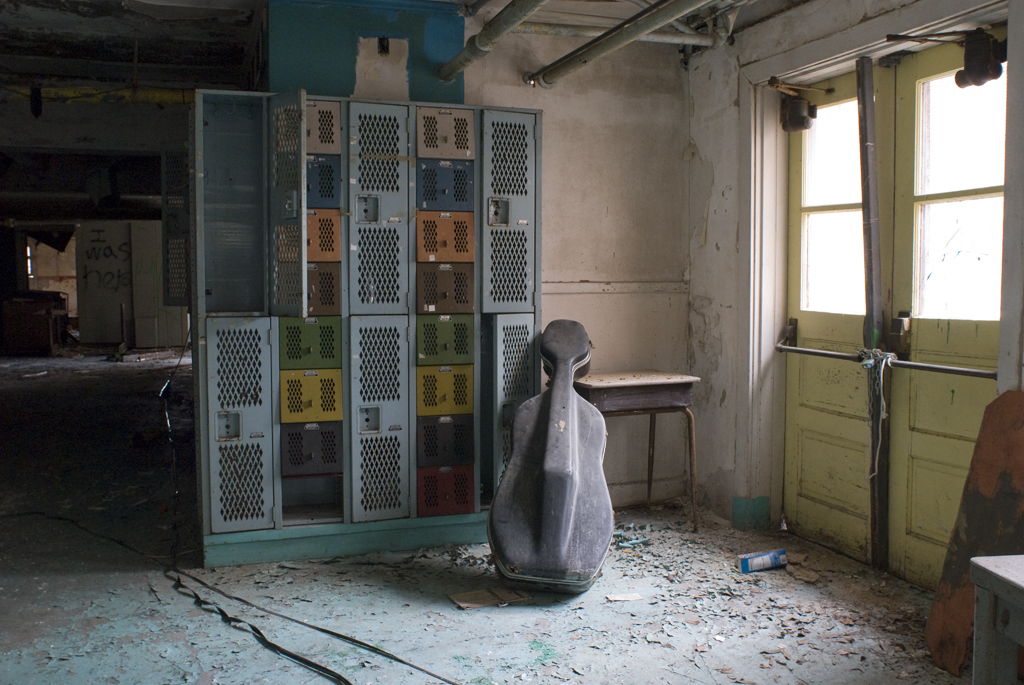
- This 1900-era Italianate-style building on the corner of Webster and Perrier streets in the Uptown Historic District has been vacant since 2000 when NOCCA moved to a new campus on the downtown riverfront. The Orleans Parish School Board has wanted to auction the building for years but has yet to sell it. In January, district councilwoman Stacy Head passed a resolution calling on OPSB to secure such abandoned properties and using the Perrier Street building as a poster child for school board-owned blight.
For more of Andy Cook’s work, visit his website.

